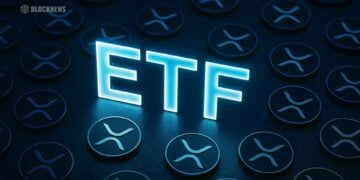- Forensic investigators to track down billions of dollars in missing funds from FTX.
- SBF allegedly built a backdoor to move funds illegally to Alameda & other entities secretly.
- Sam Bankman-Fried’s activities were tagged as a Ponzi scheme by disgruntled customers and cybersecurity analysts.
FTX’s new management has hired a team of forensic investigators to help track down funds missing from the crypto exchange, Wall Street Journal reports. The investigators are from AlixPartners, an advisory group specializing in solving complex and critical business challenges.
The financial advice has helped businesses globally in Chapter 11 restructuring and is led by Matt Jacques, a former Chief Accountant for the Securities and Exchange Commission’s enforcement division.
The decision comes after $2 billion in customers’ funds was reported missing following FTX’s collapse and consequent hack that stole around $477 million worth of FTX tokens.
On November 22, FTX’s co-counsel James Bromley said that “a substantial amount of assets have either been stolen or are missing,” adding that FTX had enlisted the help of several cybersecurity, legal, and blockchain analysis firms to salvage the situation.
SBF Backdoor Might Explain Missing Funds
As investigations earlier disclosed, the crypto exchange’s disgraced founder and former CEO, Sam Bankman-Fried, quietly transferred $10 billion of customer funds from FTX to its sister trading company Alameda Research, although ~$1B is still at large.
The financial discrepancy was discovered early last month in records that Bankman-Fried shared with other senior executives. Sources told Reuters.
More speculations have pointed at a backdoor that SBF allegedly used to siphon funds off the exchange.
Mario Nafwal, the founder of crypto company IBC Group Mario Nafwal, tweeted that SBF instructed Gary Wang (CTO) to create the backdoor, which allowed FTX to move funds illegally to Alameda & other entities secretly.
His allegation was backed by a former FTX employee calling themselves Yung Dot, who claimed to have worked with the team responsible for the “back door” that “allowed Sam to use elx to send fraudulent logger messages through the negative flux back to auditors if they ever queried.”
When questioned by Reuters, SBF said he “disagreed with the characterization” of the $10 billion transfer. Added that they didn’t transfer, but they had “confusing internal labeling and misread it.”
He also interviewed Tiffany Fong, a cryptocurrency vlogger. She asked him about the backdoor that allowed the execution of “commands that could alter the [FTX] company’s financial records without alerting others.”
SBF denied having opened FTX files, adding that he did not know to code. But speaking of the missing funds, there was a slim chance international investors would be able to recover their money.
Concerning the cyber attack that drained wallets owned by FTX and FTX.US, Bankman-Fried told Fong that he was close to identifying the hacker, having narrowed it down to eight people, and he knows that it was ‘either an ex-employee or somewhere someone installed malware on an ex-employee’s computer.’
Other key persons, including Dyma Budorin, founder and chief executive of security firm Hacken have also supported the theory of an insider attack, as the attacker had access to all the FTX cold storage wallets that were exploited.
Private keys are needed to access the cold wallets held in trust by FTX executives.
While SBF might be on his way to identifying the culprit, Nick Percoco, chief security officer of crypto exchange Kraken, announced last month that they “know the identity of the user.”
Although no name has been revealed to date.
Forensic Team to Conduct Asset Tracking
The forensic investigation team will be conducting ‘asset-tracking’ to locate and recover the missing assets while working with FTX’s restructuring team since the company has filed for Chapter 11 bankruptcy.
Although, Bahamas liquidators have rejected the Chapter 11 validity for FTX Digital Markets, the exchange subsidiary that operates under its legislatures. The commission has also taken over FDM assets, and the subsidiary is currently under investigation.
The current CEO of FTX and the chief restructuring officer said he had never seen such a “complete failure of corporate controls” in his career.
“Never in my life have I seen such a complete failure of corporate controls and a complete absence of trustworthy financial information,” John J. Ray III said.
FTX Might Have Been A Ponzi Scheme
Former FTX customers have called what used to be the second-largest crypto exchange a Ponzi scheme.
But as Thomas P. Vartanian, Executive director at the Financial Technology and Cybersecurity Center, notes, it might take a lot of uncovering to determine that.
“I don’t know if it’s a Ponzi scheme, and it’s probably going to be a while before we do know,” he says. “They’ll follow the money, and they’ll follow it down to the cent. And they’ll figure out whether we’re dealing with negligence, civil fraud, criminal fraud, and whether it’s a Ponzi scheme, a pyramid scheme, or whatever it is.”














